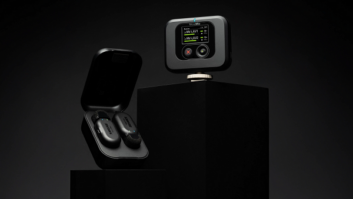Bedminster, N.J. – Verizon Wireless enjoyed a third-quarter surge in operating income and posted its second consecutive quarter of record margins despite growing reliance on highly subsidized iPhones.
Wireless operating income grew 17.4 percent to $6.05 billion compared to the year-ago quarter, and operating income margin rose to 31.8 percent from the year-ago 29 percent and the second-quarter’s 30.8 percent.
The gains came on a wireless revenue increase of 7.3 percent to $19 billion and an 82 percent surge in retail net subscriber additions to 1.76 million from the year-ago 968,000. The net adds marked the highest number of net retail adds in four years.
Verizon attributed the profit gains to multiple factors, including a 6.5 percent gain in average revenues per account (ARPA) to $145.20 for retail postpaid accounts, better-than-expected adoption of the company’s Share Everything Plans, expense cutting, and a postpaid retail churn rate that fell to 0.91 percent from the year-ago 0.94 percent per month.
Other factors include 6.8 million retail-postpaid smartphone activations, which exceeded the number of smartphone activations in any quarter in Verizon’s history except for last year’s fourth quarter. Smartphones accounted for 78.8 percent of retail postpaid phones activated, up from the year-ago 59.6 percent and up from the second quarter’s 73 percent.
Rising activations of smartphones that operate on the company’s 4G LTE network, whose operating costs are lower, also contributed to rising operating income and margins.
The share of smartphone subscribers using 4G LTE smartphones grew to 25 percent in the quarter. Fifty-one percent of Internet devices is use are LTE-equipped. A total of 3.7 million LTE devices were activated in the quarter, up from the previous quarter’s 2.5 million, said CFO Fran Shammo.
Forty seven percent of the people upgrading their phones in the quarter were buying a smartphone for the first time, Shammo added.
Because of smartphone sales gains, 53 percent of the carrier’s retail-postpaid subscribers were using smartphones in the quarter, up from the second quarter’s 49.7 percent.
iPhone, Android Sales: As a percentage of smartphone activations, the iPhone’s share grew in the quarter and might have been greater had it not been for constrained iPhone 5 supplies.
Of the 6.8 million retail-postpaid smartphones activated, 3.1 million, or 45.6 percent, were iPhones. That percentage is up from 35 percent during the year-ago period, when 1.96 million iPhones were activated.
First-quarter iPhone sales were 3.2 million. Second-quarter iPhone sales haven’t been disclosed.
Of the 3.1 million iPhones activated in the quarter, only 651,000 were iPhone 5 models, which were introduced late in the quarter.
iPhone 5 sales were also held back by supply constraints, said Shammo, who said he doesn’t know if the constraints will continue through the rest of the fourth quarter.
In the quarter, Android’s share slipped to 50 percent compared to a year-ago share of an unspecified amount above 50 percent. A total of 3.4 million Android phones were activated in the third quarter.
In outlining the progress of Share Everything plans, Shammo said the plans are attracting existing Verizon subscribers from their legacy plans, including subscribers who are giving up their grandfathered unlimited-data plans. The plans have also driven up activations of mobile hot spots to a greater extent than expected as consumers opt to use those with Wi-Fi tablets rather than buy cellular-equipped tablets, whose attachment rates to the new plans is lower than expected.
In other metrics, the company disclosed that the number of retail-subscriber connections grew to 95.9 million, up 5.7 percent from the year-ago period. The company did not disclose the subscriptions acquired through mobile virtual network operators (MVNOs).













